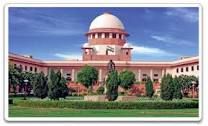http://www.firstpost.com/india/supreme-court-neet-medical-entrance-tests-aiims-pgmer-2773704.html
NEET: The Supreme Court vs state governments; students confused
The Supreme Court (SC) has finally decided that the National Eligibility cum Entrance Test (NEET) is mandatory. NEET has been made compulsory for all MBBS courses across the country from this year itself. This rule applies to both state owned medical colleges and private colleges. The only ones exempted are AIIMS (All India Institute of Medical Sciences) and PGMER (Post Graduate Institute of Medical Education and Research, Chandigarh, because they come under central statutes.
Meanwhile, the Supreme Court has agreed to consider a plea by the Central government seeking that NEET should also be held in seven regional languages.
Through its verdict, the apex court has done away with the earlier possibility of allowing state governments to continue with the old system for one more year. They wanted the CET (common entrance test) to be allowed for one more year. There was a possibility that the SC would allow NEET to be made mandatory only for privately managed medical colleges. Many of these colleges had been conducting their own examinations. This also allowed them to select the students who should be given admission, often against payment of high capitation fees. The current SC ruling makes NEET mandatory for all medical colleges.
A few days ago, this author wrote why NEET was a sensible move, and why it must be made mandatory. Predictably, there were some outbursts against this article, stating that it was unfair to students. Some people wanted the old system to continue for one more year, so that (the next batch of) students would have the time to prepare for the new entrance examinations. They pointed out how the CET was based on the syllabus of state boards while that of the NEET on the syllabus of NCERT.
To be fair, the students have been given a raw deal. But this raw deal has been meted out to them not by the SC, but by some state boards and state governments. These boards and governments have allowed their syllabuses to get diluted – often under tremendous pressure from the managements of medical colleges (many of which have been started by politicians or by those close to them).
The truth is that NCERT was always meant to provide the benchmarks for educational standards in schools across India. That the states ignored this guideline was unfortunate, because all students who appeared for such state board examinations were considered as having passed the Std X or SSC (Secondary School Certificate) examinations. In fact, many of them would not have been considered fit for any type of higher education.
Should the SC have allowed the old system to continue for one more year? That is a difficult question to answer. Allowing the old system to continue for one more year would have meant condoning sub-standard examinations for one more year – especially when these examinations are meant to filter out students who are fit to become doctors and save other people’s lives.
In fact, ask most senior doctors, and they will tell you about how medical education standards in many states have fallen abysmally, except for a few institutes like AIIMS, PGIMER and CMC Vellore. Thus, some state governments were playing not only with the lives of students, but also with the lives of countless thousands of potential patients in the future. This had to be stopped. And as the old saying among jurists goes, “Hard cases make bad laws”. When the situation turns rotten, laws have to be introduced that also cause pain to some innocents.
Will all the students really be inconvenienced? Not really. Most students who want to go in for medical studies opt to appear for at least 10-12 entrance examinations conducted by various colleges and states. Remember, India has as many as 72 entrance examinations conducted by a variety of authorities. Any student who can study for 10 examinations, can easily cope with just one NEET. And the NCERT standards are what they ought to have been fit and proper for any school-going student.
Also remember, that many of the states who had appealed to the Supreme Court against the implementation of NEET were those who had allowed the proliferation of private medical colleges. Many of such colleges were known to be providing sub-standard medical education, and had inadequate facilities for imparting such education. Worse, many such private medical colleges charged extortionate capitation fees for granting admission as well.
The court had to decide between allowing such malpractices for one more year. Or it could say “enough is enough”. The SC opted for the second.











































COMMENTS